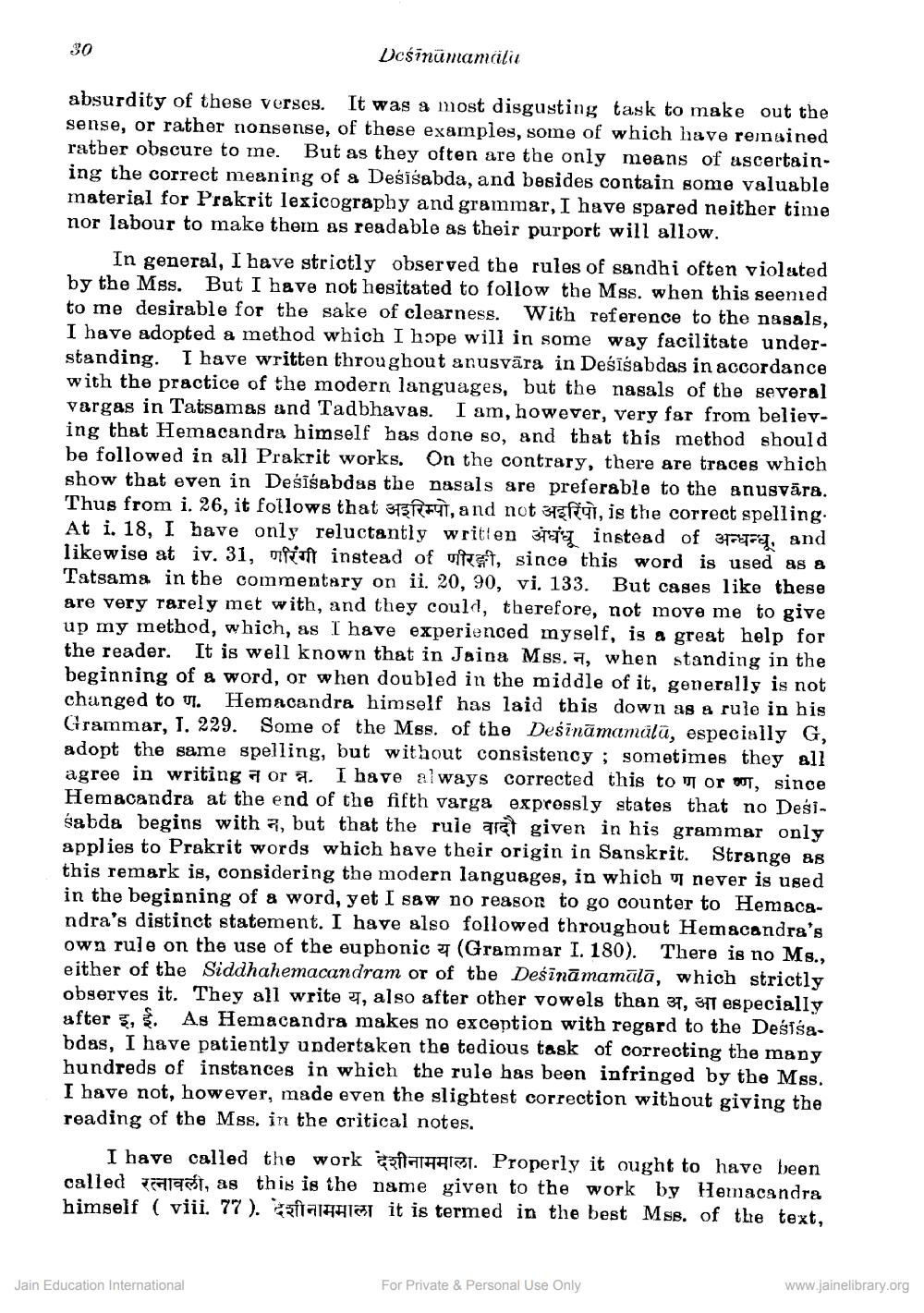________________
30
Desinamamalu
absurdity of these verses. It was a most disgusting task to make out the sense, or rather nonsense, of these examples, some of which have remained rather obscure to me. But as they often are the only means of ascertaining the correct meaning of a Deśisabda, and besides contain some valuable material for Prakrit lexicography and grammar, I have spared neither time nor labour to make them as readable as their purport will allow.
In general, I have strictly observed the rules of sandhi often violated by the Mas. But I have not hesitated to follow the Mss. when this seemed to me desirable for the sake of clearness. With reference to the nasals, I have adopted a method which I hope will in some way facilitate understanding. I have written throughout anusvära in Deśisabdas in accordance with the practice of the modern languages, but the nasals of the several vargas in Tatsamas and Tadbhavas. I am, however, very far from believing that Hemacandra himself has done so, and that this method should be followed in all Prakrit works. On the contrary, there are traces which show that even in Deśisabdas the nasals are preferable to the anusvāra. Thus from i. 26, it follows that arf, and not aft, is the correct spelling. At i. 18, I have only reluctantly written a instead of spy, and likewise at iv. 31, off instead of uftet, since this word is used as a Tatsama in the commentary on ii. 20, 90, vi. 133. But cases like these are very rarely met with, and they could, therefore, not move me to give up my method, which, as I have experienced myself, is a great help for the reader. It is well known that in Jains Mss., when standing in the beginning of a word, or when doubled in the middle of it, generally is not changed to ". Hemacandra himself has laid this down as a rule in his Grammar, I. 229. Some of the Mss. of the Desināmamülü, especially G, adopt the same spelling, but without consistency; sometimes they all agree in writing or a. I have always corrected this to mor, since Hemacandra at the end of the fifth varga expressly states that no Deslsabda begins with a, but that the rule arat given in his grammar only applies to Prakrit words which have their origin in Sanskrit. Strange as this remark is, considering the modern languages, in which never is used in the beginning of a word, yet I saw no reason to go counter to Hemacandra's distinct statement. I have also followed throughout Hemacandra's own rule on the use of the euphonic (Grammar I. 180). There is no Ms., either of the Siddhahemacandram or of the Desinämamālā, which strictly observes it. They all write 4, also after other vowels than r, o especially after. As Hemacandra makes no exception with regard to the Dealsabdas, I have patiently undertaken the tedious task of correcting the many hundreds of instances in which the rule has been infringed by the Mss. I have not, however, made even the slightest correction without giving the reading of the Mss. in the critical notes.
I have called the work
. Properly it ought to have been t, as this is the name given to the work by Hemacandra himself (viii. 77). after it is termed in the best Mss. of the text,
called
Jain Education International
For Private & Personal Use Only
www.jainelibrary.org




